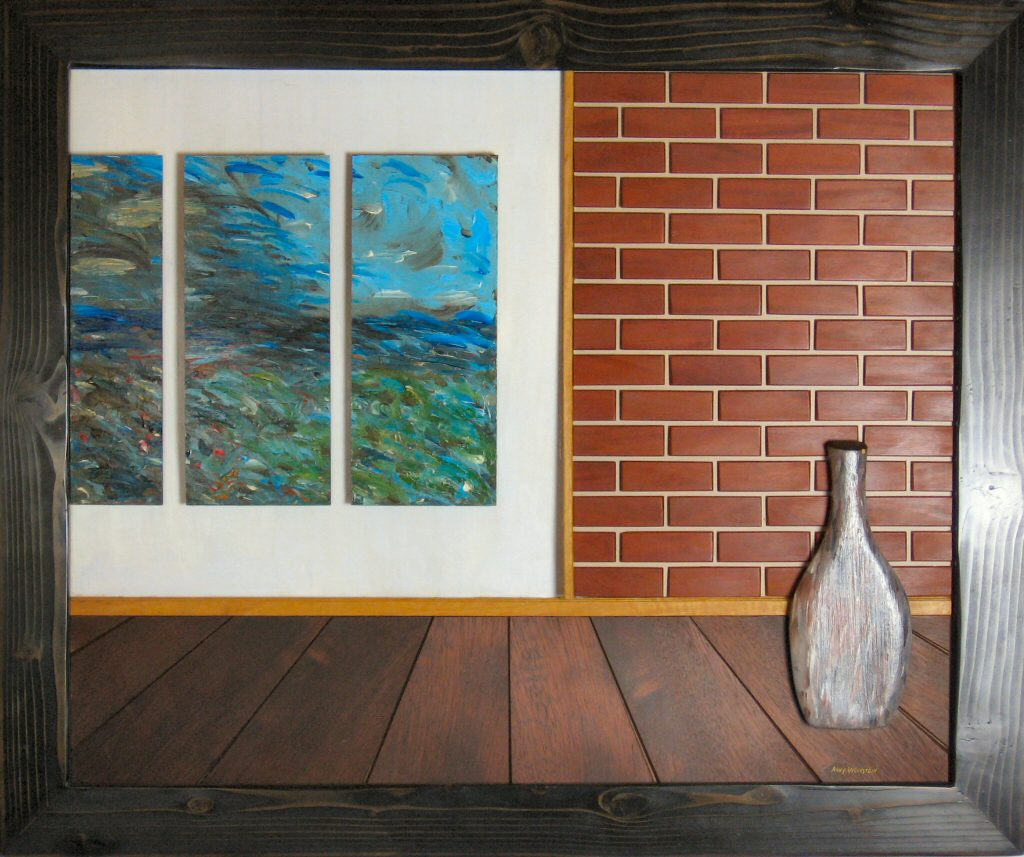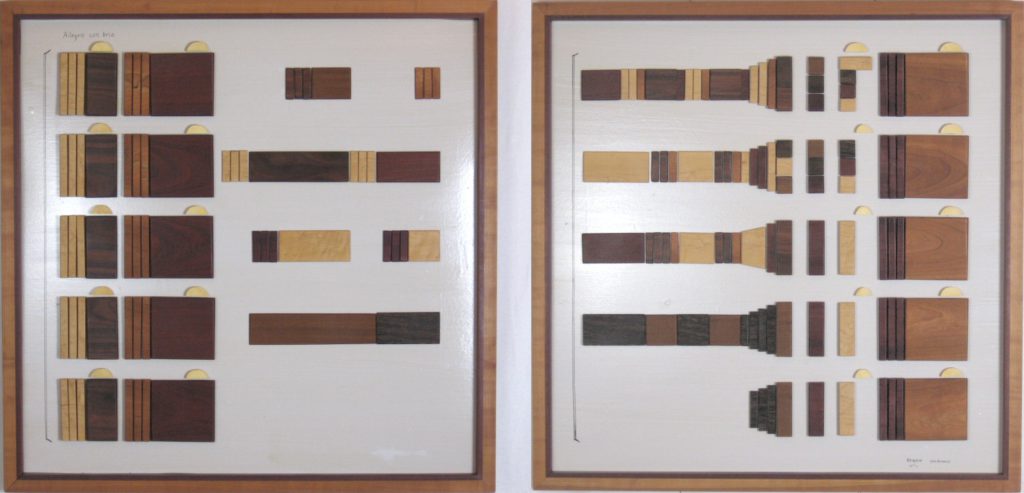Room With A View
This “room” features an original triptych acrylic painting, a brick wall composed with 67 Santos mahogany pieces, and a fine floor standing vase! The floor is Nogal (Peruvian walnut) and there’s some Anigre moulding.
Mixed Media. Dimensions: 40.5″ x 34″ x 1.75″ (with frame). $2200.
Three Sunbathers
Ash and Walnut, acrylic paint. The frame is Bubinga and Jatoba.
Dimension: 26″ x 26″ x 1.25″. $450
Allegro Con Brio
This work is explained in detail below. It is a two piece (diptych) set. Each piece is 31″ x 31″ x 1.25″. With a 2″ gap between them, the total dimensions would be 64″ x 31″. The explanation below is included as a framed document which can be displayed with the artwork. $3400.
Allegro Con Brio.
This work is a representation, in wood, of a portion of Symphony No. 5 (in C Minor, Opus 67) by Ludwig van Beethoven (1770 – 1827). Specifically, it portrays the notes of the string section for the first 24 measures in the first movement: Allegro con brio (fast with a lively spirit).
The time signature is 2 over 4, as in two quarter notes per measure. Here, a quarter note = 1”, or each measure is 2” wide. Each of the two parts/frames has 12 measures. The top row is the Violin I part, the second row is Violin II, third row, Viola, fourth row, Cello and the bottom row has the Contrabass notes. Some notes are “tied” (continuously played) over multiple measures, therefore there are wider pieces. Blank areas are “rests” – no notes, no wood.
An analysis of the score shows that there are 8 different notes written. Each is depicted by a wood species as follows:
A flat – purpleheart
B natural – wenge
C – afromosia
D – bloodwood
E flat – santos rosewood
F – cherry
F sharp – East Indian rosewood
G – birdseye maple.
The “hold” symbols (fermata) are in holly. There are 20 hold symbols and 159 notes represented, for a total of 179 pieces. The frames are cherry and bloodwood.
Regarding dynamics, “ff” notes (fortissimo – very loud) are the thickest and tallest (4”) pieces. The “p” notes (piano – soft), are the thinnest and shortest (2”). There is a crescendo in measure 18 from piano to forte. (“f”).
Follow the notes for any one instrument, then get the visual for how the notes of two or more instruments interact.
Okay, now sing it — you know it well… “ dit dit dit DAAAAAH….” !!
ARNY WEINSTEIN



